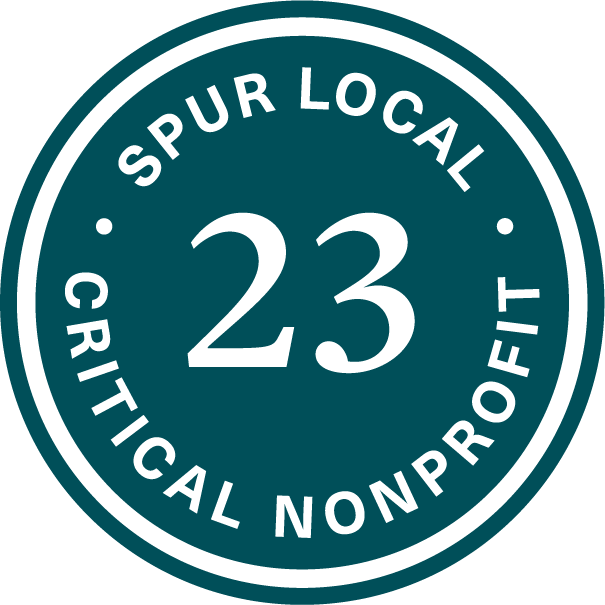CCE and Auditor Release New Report About Crossover Youth in D.C.

May 28, 2024 - While considerable attention has been focused on youth crime in D.C., little is known about the life experiences and circumstances of justice-involved youth. CCE's newest report, A Broken Web: Improved Interagency Collaboration is Needed for D.C.’s Crossover Youth, finds that one characteristic many share is involvement in the child welfare system due to abuse and neglect.
CCE Executive Director, Misty Thomas Zaleski, noted that "our audit found there was insufficient coordination between the local and federal agencies that serve crossover youth in D.C. These agencies currently are not identifying these young people as a population with unique needs that require agencies to collaborate and tailor supports for them and their caregivers. This includes helping address the traumatic experiences that contributed to the youth crossing over, which in turn can help keep them from going deeper into the justice system and pave the way to their having brighter futures."
A Broken Web documents how the District, and in particular the Department of Youth Rehabilitation Services (DYRS, the District’s youth justice agency) and Child and Family Services Agency (CFSA, D.C.’s child welfare agency), underserves these vulnerable young people. CCE found that there is some data sharing and coordination around D.C. youth who are “dual-jacketed,” i.e. who have simultaneously open cases with both DYRS and CFSA. However, there is no data collection nor any special programmatic focus on youth whose justice involvement begins after their child welfare case was closed, despite research showing that untreated effects of maltreatment are associated with greater risk of justice system involvement.
The new report includes the following key findings:
- There is no single unified source of public data related to crossover youth in the District, making it difficult to understand the number and needs of this vulnerable population.
- CFSA and DYRS undercount the number of crossover youth in their care because they only count dual-jacketed youth, rather than youth involved in both agencies at any point in their lives. CFSA and DYRS identified only 8 crossover youth in FY 2023, while CCE analysis of court records indicated 93 youth at the end of FY2022 were involved with the delinquency system and had current or past child welfare involvement.
- Crossover youth are essentially invisible to CFSA and DYRS; neither clearly recognizes this population in their current operating documents, systems, policies, or practices, and their rights as justice-involved youth are not clearly identified in the Bill of Rights for Children in Foster Care. This impedes the agencies’ ability to address the special needs and manage cases of these young people and can leave youth in New Beginnings and other facilities unaware of their rights.
- CFSA and DYRS do not sufficiently collaborate or communicate regarding crossover youth.
 Some of the report’s recommendations include:
Some of the report’s recommendations include:
- D.C. Council should ensure the Office of the Ombudsperson for Children (OFC) has sufficient authority and funding to analyze and report on crossover youth annually.
- CFSA and DYRS should reestablish the “Crossover Youth Steering Committee” to identify, manage and serve crossover youth in their care.
- CFSA and DYRS should identify and track crossover youth in their case management systems.
- CFSA and DRYS staff should be trained on the unique needs of crossover youth. Additionally, parents and foster parents should receive training and resources to help identify and meet the needs of youth who are, or are at risk of becoming, crossover youth.
"We spoke with crossover youth, as well as caretakers and professionals who work with these young people,” said Tracy Velázquez, CCE Policy Director, “and they helped to identify critical gaps and challenges in D.C.’s systems and in how the District interacts with its neighbors in terms of sharing information and coordinating cases. These conversations, as well as the analysis of data from the courts and the agencies, showed more needs to be done to help these young people thrive, which in turn will help improve community safety and wellbeing. We hope this report is a pivotal step towards creating a more equitable and effective system of care for some of our community's most vulnerable youth."
While the audit’s recommendations focus on the two audited agencies, CFSA and DYRS, CCE also found that collaboration with other public entities is needed to appropriately serve crossover youth. This includes the Court Social Services Division (CSSD), the federal agency that handles youth probation, and agencies in neighboring states, since half of D.C. foster care placements are in Maryland. The report recommends D.C. look to other jurisdictions that have made improvements, many through the Crossover Youth Practice Model developed by Georgetown University’s Center for Juvenile Justice Reform.
The release of A Broken Web marks a significant step towards addressing the complexities of serving crossover youth in the District. While acknowledging that there are no quick fixes, the report's pragmatic recommendations provide a roadmap for meaningful progress towards improving the lives of the District’s young people and creating a safer and healthier D.C.


